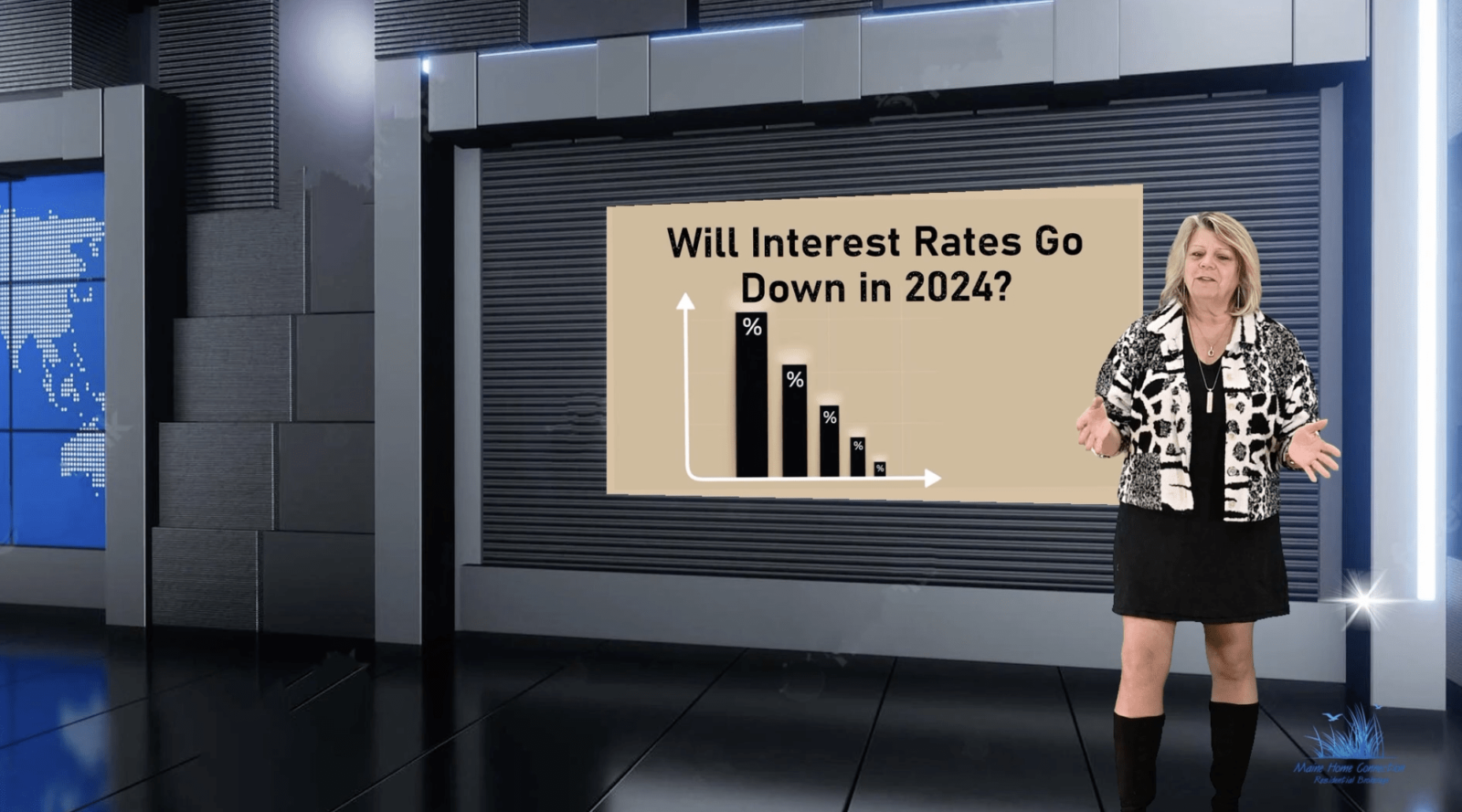Interest and mortgage rates have started to decline, giving buyers a little more room in their budgets. But they won’t be plunging back down to the sub-4% levels of 2019 and 2022 just yet.
Inflation is cooling, and the Federal Reserve has indicated it’s done hiking rates. That should allow mortgage rates to fall further, some experts say.
Inflation
Mortgage rates are on an eight-week win streak, shedding more than 150 basis points to move from the high-eights into the low-sixes. That has given homebuyers 16% more purchasing power, and that may be enough to spark more activity in 2024.
Still, the affordability gap will remain a major obstacle to more activity, especially for cash-strapped first-timers. “Until mortgage rates and home prices start to fall significantly, most households will likely struggle to make the transition into homeownership,” said Orphe Divounguy, senior macroeconomist at Zillow. And there’s little reason to expect that those conditions will change anytime soon.
That’s because the factors that drive mortgage rates are largely out of everyone’s control. They’re tied to the economy, job market, inflation and the Fed’s interest rate policy, all of which are subject to unpredictable shocks.
For example, if investors become convinced that the Fed is about to inadvertently trigger a recession, that could send them fleeing from risky investments such as mortgage-backed securities, pushing mortgage rates lower. Likewise, if the Fed raises interest rates too quickly or aggressively, it could send them skyrocketing and choke off economic growth, which would also push rates down.
In fact, the Fed’s goal is to achieve a “soft landing,” which is a gradual slowdown in economic growth that keeps inflation under control without triggering a recession. That’s a tricky feat, and many experts are skeptical that the central bank will be able to pull it off.
So mortgage rates are unlikely to go back down to their record-low levels anytime soon, but they should continue their downward trend in 2024. And that’s good news for buyers, especially if they can qualify for a mortgage with a strong FICO credit score and a decent down payment. Using a mortgage calculator, you can get an idea of what your monthly payments will be at different interest rates and term lengths. Then when you’re ready to buy, talk to a licensed loan officer about your options and see how affordable homeownership can be in your area.
The Federal Reserve
Mortgage rates are influenced by a lot of factors, including inflation, the economy and the Federal Reserve. The Fed’s decisions, in turn, can affect everything from the annual percentage rate on credit cards to the yield on savings accounts and even your stock portfolio. That’s why it’s important to follow the Fed and stay tuned in for their announcements.
Over the last two years, the Fed implemented a series of rate hikes that pushed mortgage rates up to near 7%. However, with inflation cooling and further Fed rate increases halted, mortgage rates are now hovering around 6%. Fortunately, they will likely be heading down again in 2024.
While mortgage rates don’t directly follow the Federal Reserve’s interest rate decisions, they typically move up and down with 10-year Treasury yields. This is because lenders wrap up the proceeds of every new mortgage into a bond called a mortgage-backed security that investors can purchase. When yields are low, investors have fewer reasons to buy these bonds, which pushes mortgage rates higher.
But when yields are high, investors have more incentive to buy these bonds, pushing mortgage rates lower. It’s the same principle that drives interest rates on other forms of credit, like credit card APRs or auto loan APRs.
Ultimately, it’s not just the federal funds rate that affects mortgage rates, but also the federal government budget deficit and the amount of money that the Federal Reserve is storing in its vaults. In addition, mortgage rates can also be influenced by the pace of global growth and the strength of domestic demand for housing.
The experts we spoke with expect mortgage rates to trend downward this year. Fannie Mae, the major backer of conventional mortgages, predicts a range of 6.9% to 7.3% by year’s end. And Freddie Mac, which backs conventional mortgages with slightly different underwriting standards, sees rates at 6%.
It will be crucial to watch economic data, especially the GDP and consumer spending numbers, over the course of 2024 to get a better sense of where mortgage rates are headed. A slowing economy would be a good reason for the Federal Reserve to cut rates, while strong GDP growth and inflation could prompt the Fed to keep rates at current levels or even raise them.
The housing market
After soaring last year thanks to the Federal Reserve’s war on inflation, mortgage rates are expected to decline in 2024. But whether homebuyer demand can pick up amid affordability challenges remains to be seen.
As a whole, experts expect mortgage rates to be anywhere from 6.1% to 7.6% in the first quarter of 2024 and then continue to fall throughout the year. However, these rates are still above the historic lows seen before the COVID-19 pandemic.
The slowdown in mortgage rates should also help to slow inflation and bring it back closer to the Federal Reserve’s target of 2%. In turn, this could further bolster the housing market and push down rates even further.
But for this to happen, mortgage rates need to be lower than the soaring highs that drove them up in 2023. In January, mortgage rates were near six-and-a-half percent and existing home supply had dropped to 2.9 months—well below the 5-6 months needed for a balanced housing market. This environment created serious barriers to buying and caused many Americans to sit out the housing market.
In 2023, the combination of elevated mortgage rates and a lack of affordable homes made it impossible for many people to buy or sell their property. But that dynamic should slowly dissipate in 2024 as mortgage rates move lower and the spread between Treasury yields and mortgage rates narrows.
Regardless of mortgage rates, the lack of new construction and existing inventory is likely to keep a lid on home prices in 2024. In fact, most experts expect home prices to continue rising but at a slower pace than what was seen in 2021 and 2022. The good news is that a cooling economy and mortgage rates should make it easier for more buyers to afford a home in 2024 than it was in the summer of 2018.
For these reasons, most experts expect homeownership to remain popular among American adults in 2024, despite a lack of affordable options. But it’s important to remember that many people will be unable to get a mortgage at these rates, especially in expensive markets like Southern California.
The economy
The housing market has benefited from lower mortgage rates, but still remains challenged by the limited supply of affordable homes on the market. If mortgage rates continue to fall, it may encourage more prospective buyers to consider purchasing a home, especially as incomes rise. The good news is that housing prices are likely to decline over the next year, which should further boost affordability.
It’s impossible to say for sure where mortgage rates will go in 2024, but the general consensus is that they will spend the bulk of the year below 6%, and may even move below 5% at times. The cooling job market has the potential to contribute to this, as higher wages will help offset the cost of buying a home.
Another factor is the Federal Reserve. While mortgage rates aren’t directly linked to the Fed’s interest rate policy, they often trend up or down based on investor demand for mortgage-backed securities, which in turn is influenced by how investors expect future Fed rate moves to affect the economy. When the Fed paused rate hikes in late-2023, this lowered expectations for future increases, and mortgage rates responded by falling.
As the economy recovers, the Fed could also cut rates again, further easing mortgage rates. In fact, Freddie Mac’s chief economist recently forecasted the Federal Reserve would cut rates two or three times this year.
Combined with the cooling inflation and the expected Fed cuts, this should be enough to push mortgage rates down significantly. However, it will take time for mortgage rates to get down to the levels they were at before the COVID-19 pandemic.
If you’re thinking of buying a new home, it’s important to start saving for a down payment as early as possible. Not only will mortgage rates be cheaper, but you’ll get better returns on your investments in high-yield savings accounts and certificates of deposit (CDs). The good news is that as the economy continues to improve and mortgage rates decrease, more people will find it financially feasible to buy a home. This should increase the overall demand for housing, allowing builders to keep up with demand.

















Leave a comment